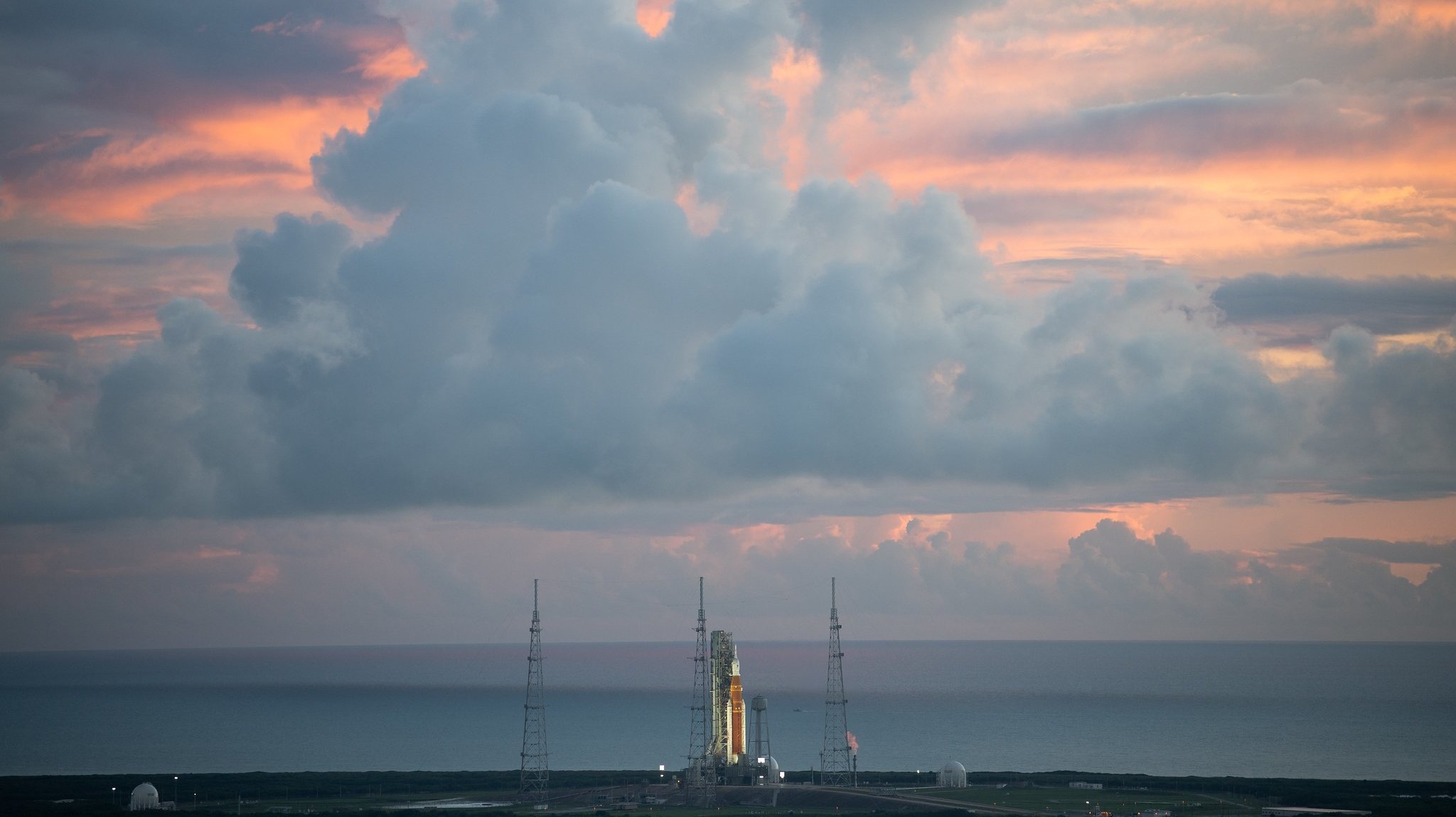The launch of the Artemis I mission, the first step in NASA’s program to return to manned flights to the Moon, has been delayed. A minute after the scheduled launch time, which should have been 1:33 p.m. on Monday, the verdict was in: the The technical problems that had been detected hours before were inevitable. The search for Artemis I had to wait.
After the US space agency filled the fuel tank of the Space Launch System (SLS) rocket, it was detected an overheating problem in one of the four main engines, the RS-25, which prevented the hydrogen propellant from operating at cryogenic temperatures. The problem forced the countdown to the launch to be suspended, which was ultimately postponed.
This part of the process has not been tested in trials. carried out in June, NASA confirmed. “This is something they wanted to try during the fourth rehearsal, but they couldn’t. This was the first opportunity for the team to see this in action live. Getting this temperature is a particularly tricky issue, according to engineers,” NASA spokesman Derrol Nail said.
Bill Nelson, NASA administrator, has already reacted to the postponement of the Artemis I mission. At a press conference, he said that “this is part of the space business and particularly a test flight, we’re testing the ship in a way we wouldn’t if there were a human crew on boardthat’s the goal.”
“We don’t launch until the right time, we don’t light the candle until we’re ready,” explained the administrator of the US space agency: “I think it illustrates that this is a very complicated machine, a very complicated system And all of these things really have to work.”
Another technical problem marked the last hours of controls around the Artemis I mission: the appearance of acracks in the seams of the polyurethane surrounding the main stage of the rocket — an orange foam that acts as a heat shield for the device and also existed in the space shuttle program. NASA has already explained that the ice accumulated in this fissure was, in fact, air that had escaped from the foam and cooled.
It is not yet known when the mission will be released. The next window of opportunity is Friday, September 2 from 5:48 p.m. to 7:48 p.m.; and there is another 90-minute one starting at 10:12 p.m. on September 5. But NASA has not yet confirmed that any of these dates are on the horizon for the Artemis I mission because it is not yet sure if the overheating problem will be resolved in the coming days.
The search for a release date depends on four factors: the Position of the Moon in orbit around the Earth, the position of the Sun along the path of the Orion spacecraft and at the time of re-entry; and the position of the Earth in its rotation. First, because the upper stage of the rocket has to perform a maneuver at a specific point to catapult the spacecraft on a trajectory that allows it to make a distant orbit on the Moon.
Then because the Orion ship cannot spend more than 90 minutes without receiving sunlight, since its operation and maintaining the ideal temperature of the capsule depends on it. THE re-entry into the atmosphere at the end of the mission must also occur at a specific timeto ensure that the spacecraft lands in the Pacific Ocean, exactly in the agreed place and during the day, to facilitate the recovery of Orion.
Source: Observadora
